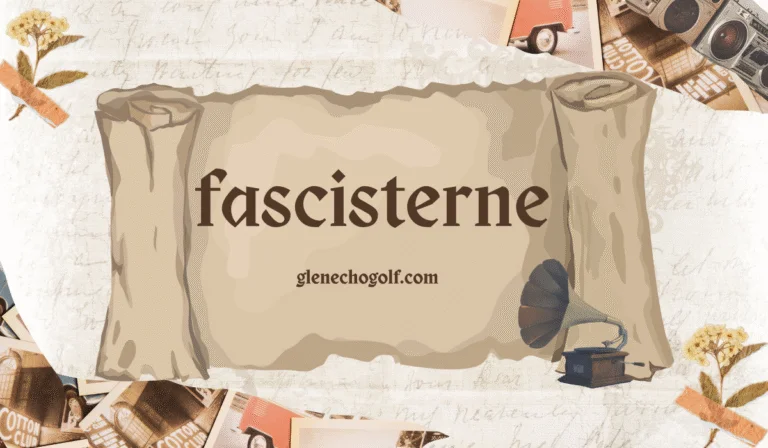Introduction to “Fascisterne”
The term “Fascisterne” is the Danish word for “the fascists,” and while it may seem like just another political label, the weight it carries is immense. Used in a wide array of political, social, and historical discussions, “Fascisterne” often evokes strong reactions—some rooted in history, others shaped by modern political climates.
Understanding what fascism is, and how “fascisterne” have influenced different parts of the world, particularly in Europe, is key to recognizing the dangers of authoritarianism and ultra-nationalism. In this article, we’ll break down what “fascisterne” stands for, trace the origins and historical roots of fascism, explore how it manifested in various countries, and look at the resurgence of fascist ideologies in modern politics.
Origins of Fascism: From Mussolini to Hitler
To understand “fascisterne,” we need to go back to post-World War I Europe, where the modern concept of fascism first took root. After the war, many European countries were left economically devastated and politically unstable. In this vacuum, fascism emerged as a seemingly strong, unifying ideology for those seeking order and national pride.

Italy: The Birthplace of Fascism
Fascism began in Italy fascisterne under Benito Mussolini in 1919, when he founded the Fasci Italiani di Combattimento. The term “fascism” itself is derived from the Latin word fasces, a bundle of rods symbolizing strength through unity. Mussolini promoted a mix of nationalism, anti-communism, militarism, and centralized authoritarian leadership. He promised to restore Italy to its former Roman glory—a message that resonated deeply with a disillusioned population.
Germany: Nazism as a Variant of Fascism
While Italian fascism was the blueprint, Adolf Hitler took it to even darker places with the Nazi ideology in Germany. Hitler’s version of fascism incorporated extreme racial superiority theories, resulting in the Holocaust and the deaths of millions. The Nazis, or “fascisterne” as they were called in many parts of Europe, became synonymous with violence, genocide, and total war.
Fascism’s Spread Across Europe
Fascist ideologies didn’t remain confined to Italy and Germany. Spain under Franco, Portugal under Salazar, and various Eastern European countries saw the rise of similar authoritarian movements. These versions of “fascisterne” shared core principles: suppression of opposition, strong nationalist rhetoric, and the elevation of the state over individual freedoms.
Core Ideological Beliefs of Fascisterne
Fascism is often hard to define neatly because it adapts to local conditions, but it has a few ideological cornerstones that are almost always present when “fascisterne” gain power.
Authoritarianism and the Cult of Leadership
Fascist regimes revolve around a single, charismatic leader. The idea is that only a powerful, unchallenged figure can restore a nation’s glory. This personality cult can be seen in Mussolini’s Italy and Hitler’s Germany, where leaders were portrayed as infallible and even semi-divine.
Ultra-Nationalism and Xenophobia
Another trademark of fascisterne is intense nationalism. This usually includes an idealized past, glorification of the homeland, and a strong sense of “us vs. them.” Foreigners, immigrants, or minority groups are often scapegoated and blamed for the country’s problems.
Suppression of Opposition
Freedom of speech, press, and political pluralism are the first casualties in fascist regimes. Fascisterne typically outlaw opposing political parties, censor the media, and use state surveillance and violence to crush dissent.
Militarism and Glorification of War
Fascist movements love parades, uniforms, and martial values. War is often seen not as a tragedy but as a way to unify and purify the nation. The glorification of violence often translates into aggressive foreign policies.
Fascisterne in Denmark and Scandinavian Responses
While Denmark never fully fell under fascist rule, it wasn’t immune to fascist influence. During World War II, Denmark was occupied by Nazi Germany, and Danish fascists like the National Socialist Workers’ Party of Denmark (DNSAP) tried to push fascist ideologies within the country.
Danish Resistance and National Identity
Despite the presence of fascisterne during the war, Denmark became known for its strong resistance movement and for protecting its Jewish population. This collective national response against fascism has deeply influenced Danish identity and continues to shape its democratic values.
Post-War Rejection of Fascism
After the war, there was a strong push in Denmark and the broader Scandinavian region to reject fascism completely. Educational programs, historical preservation, and a commitment to democratic governance became central in preventing any return of fascisterne ideologies.
The Modern Echoes of Fascisterne
It would be comforting to think that fascism died in 1945, but unfortunately, that’s not the case. In recent years, far-right movements across Europe and the Americas have adopted rhetoric and strategies that bear unsettling similarities to fascisterne of the past.
Rebranding Fascism for the 21st Century
Today’s fascisterne don’t always wear military uniforms or speak openly about authoritarianism. Instead, they frame their ideologies in terms of “protecting cultural identity,” “anti-globalism,” or “freedom from elites.” But the core messages—intolerance, nationalism, and authoritarian leanings—are often the same.
Social Media and the Rise of Digital Fascism
Social media has given modern fascisterne a powerful tool for spreading their message. Through memes, videos, and targeted misinformation campaigns, they can reach disillusioned young people and mobilize fringe beliefs into political movements.
Vigilance and the Role of Democracy
The best way to counter modern fascisterne is through education, civic engagement, and democratic resilience. Recognizing the early warning signs—such as attacks on the press, vilification of minorities, and erosion of democratic norms—is crucial.
Why Understanding Fascisterne Matters Today
We’re living in a time of increasing political polarization, economic instability, and rising authoritarianism around the world. That’s why understanding what “fascisterne” represents—both historically and in contemporary contexts—is so important.
Learning from History
History teaches us that fascism doesn’t arrive all at once. It creeps in through propaganda, scapegoating, and the erosion of democratic institutions. By studying how fascisterne came to power in the past, we can better defend against similar movements today.
Empowering the Next Generation
Educating young people about the dangers of fascism isn’t about rehashing old history lessons—it’s about empowering them to recognize and challenge injustice. A democracy can only survive if its citizens actively participate in its protection.
Building Inclusive Societies
Ultimately, the best antidote to fascism is inclusivity. Societies that value diversity, open dialogue, and equal rights for all are much less vulnerable to fascisterne ideologies. This means investing in education, social programs, and platforms that allow for constructive political discourse.
Conclusion:
“Fascisterne” is more than a historical label—it’s a warning. A reminder that democracy is fragile, and that the seeds of authoritarianism can sprout in the most unexpected places. By understanding the origins, beliefs, and consequences of fascist movements, we can be better prepared to protect the freedoms we often take for granted.
Whether you’re studying history, engaging in political activism, or just trying to make sense of the modern world, the story of “fascisterne” offers crucial lessons. It teaches us to be vigilant, informed, and most importantly, committed to justice and human dignity—because those are the very values that fascism seeks to destroy.





